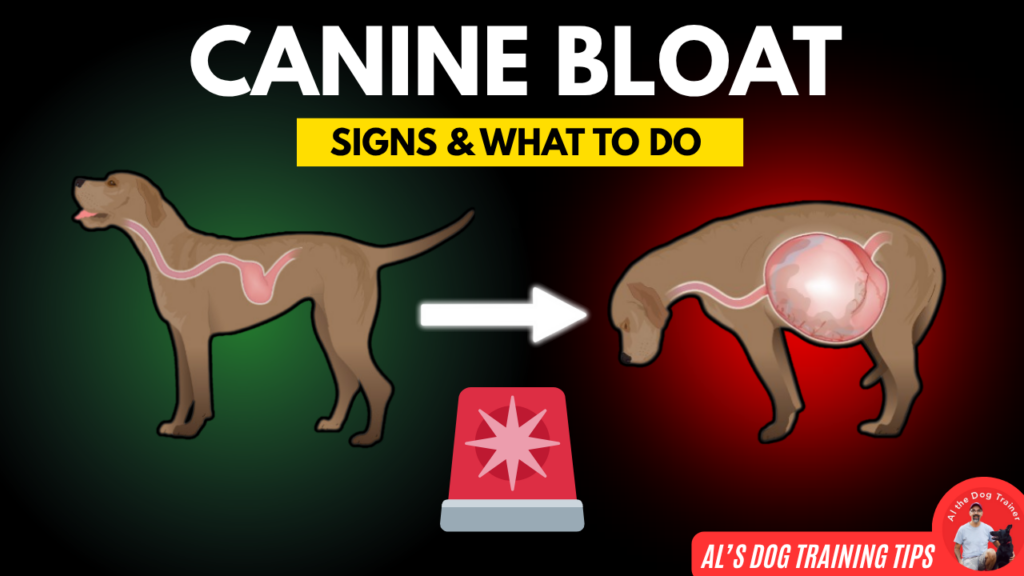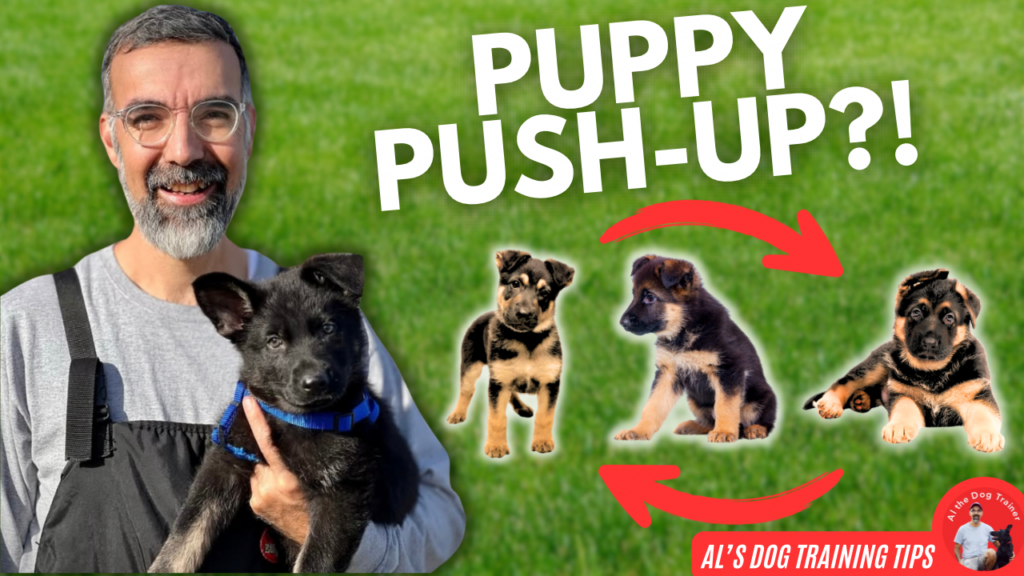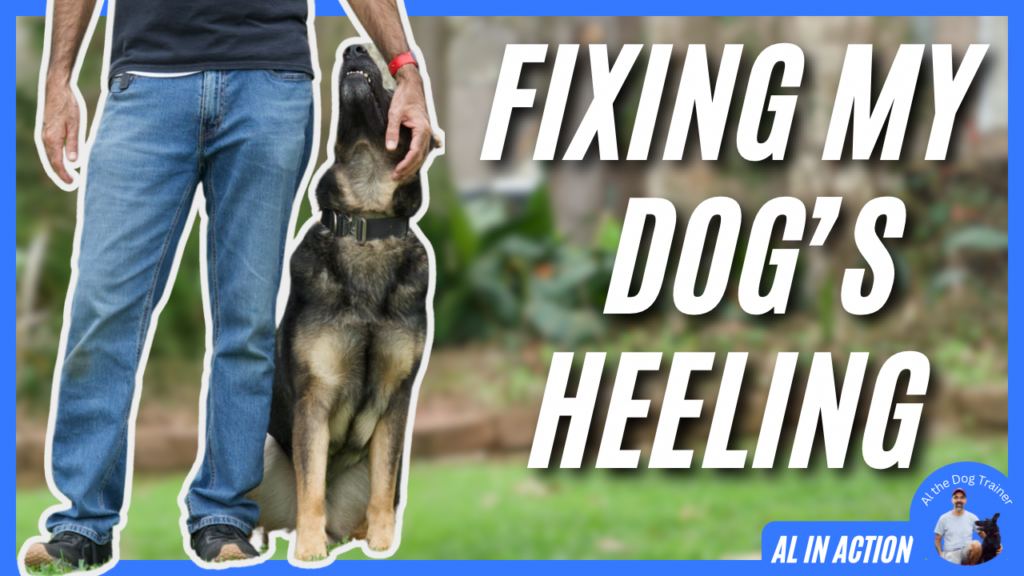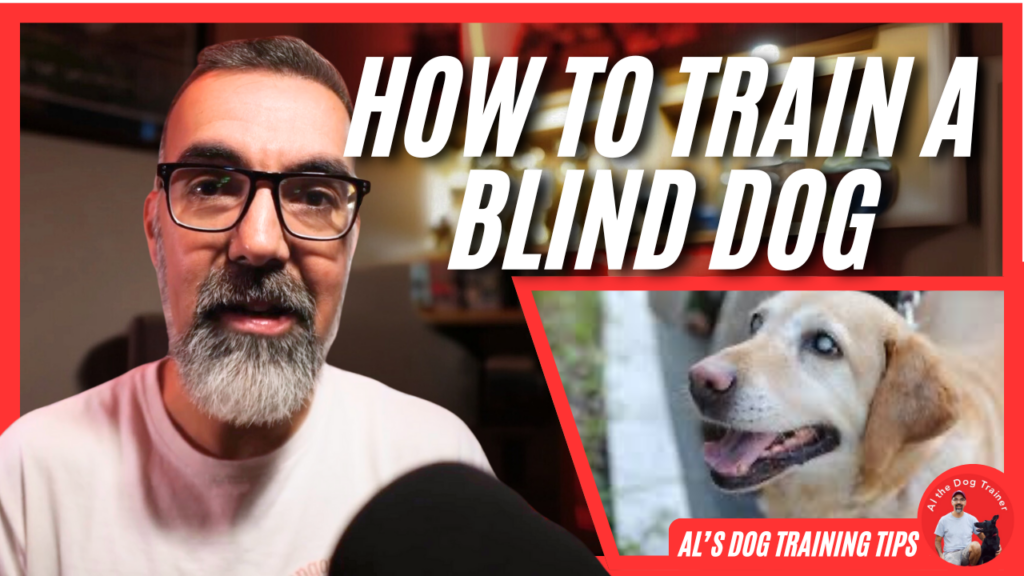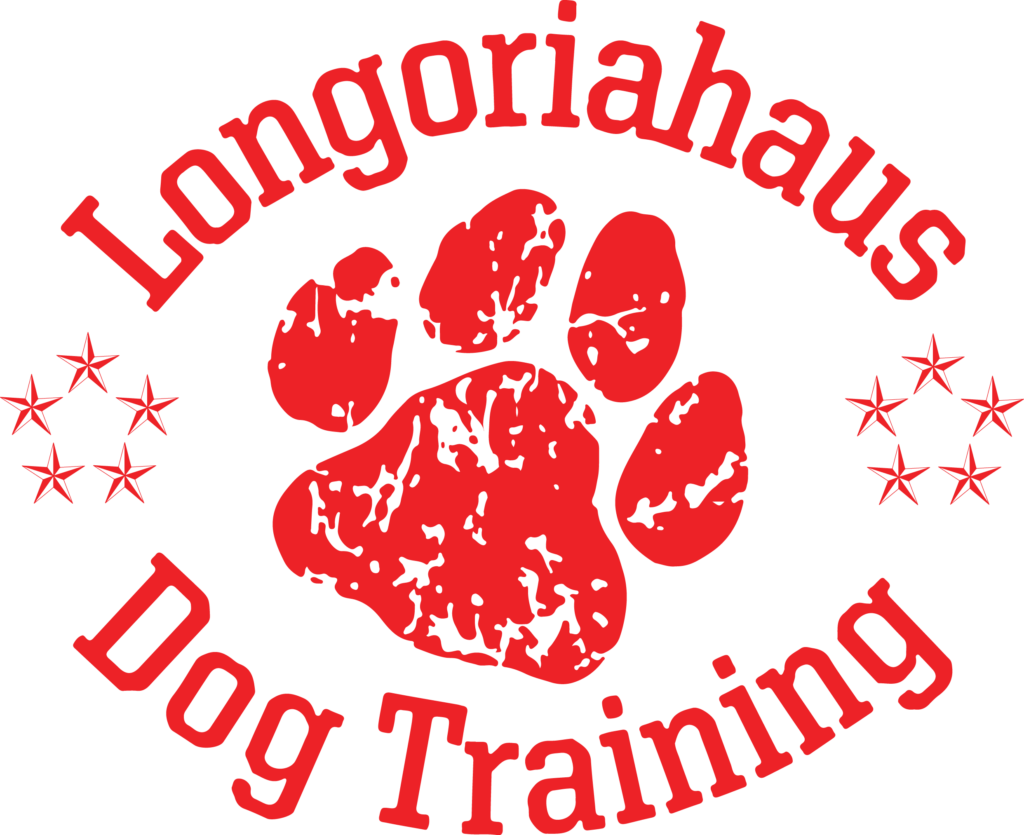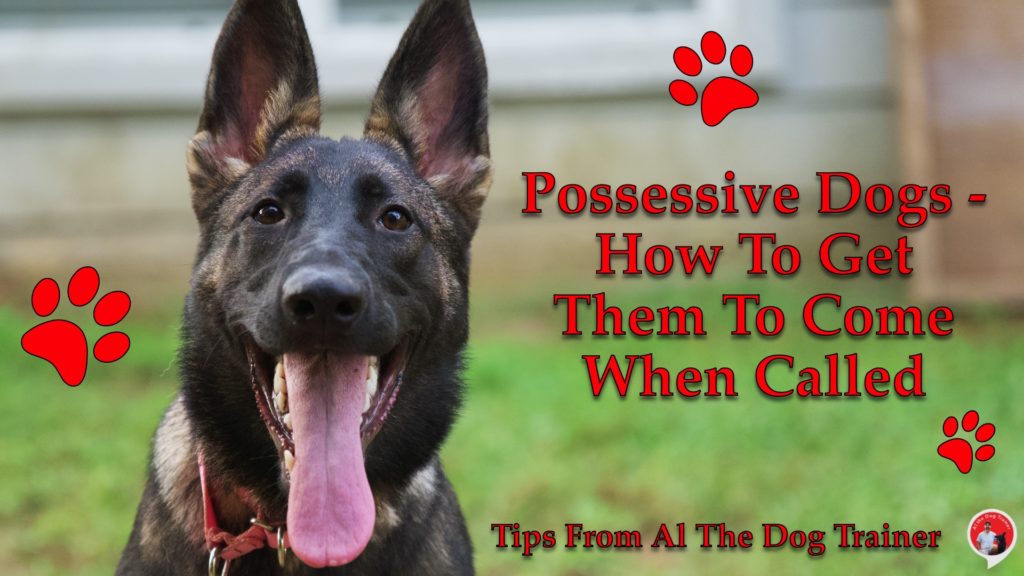
Today’s topic is possessive dogs how to get them to come when called. So you might know that I have two German Shepherd puppies that I’m training right now. Now they’re getting closer to seven months old and five months old. One of these dogs, Alpha, the seven-month-old, is a very possessive dog.
As far as puppies go, this has to be one of the most possessive dogs that I have ever owned. I don’t know that she is the most possessive dog that I’ve ever seen, but at least the most possessive that I have owned and trained on a daily basis.
So if you have a very possessive dog, I want to let you know that I’m having a lot of success getting her to learn how to come when called. So I’m going to give you some of the things that I’m doing to help myself. To make sure that when I say “Alpha”, she understands that she needs to come and that it is a good thing to do.
Nonverbal Cues
Okay, let’s start with the first tip, and this first tip is something that I do with practically every dog. So if you’ve ever watched me train or if you’ve ever had me evaluate your dog, you probably noticed that I don’t talk to the dog for at least the first few minutes. As I’m reading the dog’s nonverbal cues that they’re sending me.
So at some point when I’m evaluating a dog, I end up starting to talk to them. And there are two things that I want to say to every dog the first time that I start speaking to them. And the first thing is “good dog”. Those are generally not always, but usually going to be the words that I used to tell them that they are right. And then there’s going to be their name.
When you’re training a dog, the timing of your voice concerning your nonverbal signals is pretty essential. Timing can play a significant role whether your dog is going to get it or not. So what I first do almost always is I’m handing the dog food, and as I’m opening my hand, I’m saying “good dog”, and then the dog’s name. So in my case, I would be saying “good dog Alpha” or “good girl Alpha”, something like that.
The first tip is that anytime that you’re working with your dog, especially if you’re doing food or treat based training as you bring the food to the dog’s mouth, say “good dog”, plus the name that you’re going to want them to come to. Get good at that.
Treat Toss Game
The second thing that I do, and I also do this with practically every dog, is introduce them to the treat toss game. I like using the hallway where I am throwing a singular piece of food against the wall. And then, as the dog goes off and chases it, I will say their name. Plus, the word “come” right before they turn around and start. So in my case, it would be “Alpha come”. And then when she does turn around, I end up saying, “good girl”, and then she comes back and I give her the food that I just promised her because I’m teaching the dog that “good girl” means I’m going to give you a piece of food.
I do this quite a bit. Like I said. I throw the food, I say, “Alpha come”. She turns around, I say, “good girl”. She comes back to me. I reward the dog for coming back.
Okay, these two steps are pretty necessary, because if you have a possessive dog and you bring a ball out, a tug, a stick, your sock, a shoe, whatever it is. You know that they want it and they want to have it in their mouth, and you know that they’re going to run away from you once they get it.
Two-Ball
So the next thing that I teach a dog, and it’s surprising to me that this works, is I take a ball on a string and have maybe two or three of them, and I’m wearing a training vest when I’m doing this, but it’s not necessary. The training vest sure does make it easier. And all I show the dog is that I’m going to have them get the ball through my legs. When they’re in front of me. I’m going to have them go through my legs, and then I’m going to toss it out a small distance.
I don’t have a leash on the dog, but when the dog goes to get that ball, I then have a second ball, and I begin to show them that ball as I start to say their name and “come” like I’ve been showing them in the treat toss game. This step is crucial. It’s so important to get the dog to go through your legs and then have them chase the ball because this is the part that shows the dog they coming back, gets you a ball that you can be possessive for. And then it helps you if you have that second ball.
So that way, when they do come back, they’re like, oh, you’ve got a ball. I want that one. Even though they already have one, it will help you tremendously. If I were to time these things, these three tips that I’ve given you so far. I would be doing tip number one all the time. I would be doing tip number two for several weeks before I started taking tip number three, which is where I introduced the two-ball.
Playing Tug
Okay, final tip. So I also like to play tug with these dogs. But when I play tug with these dogs, I have some kind of flat collar. It could be a buckle collar. It could be a reasonably wide martingale collar, like, maybe a half-inch or three quarter inch martingale collar. I’ll have a 4-5 foot leash on the dog. I’ll play tug with a dog, and as I’m playing tug with them, I will let go of the object. They’re going to begin to run away with it because they’re becoming possessive.
I’ll then backpedal as I use the leash, and I’m calling them. As they get a little closer to me, I’ll say, “good dog”, and now begin to tug with the dog again. If you let go of the leash, good luck with this one, it’s essential to hold on to the leash. And when you’re playing, that, it is slack, and you’re letting the dog enjoy.
I love to do this last one because I feel that it just makes it fun because the dog is close to you almost the entire time.
So those are the four tips that I have for you for getting possessive dogs to come and called. You first say their name along with handing them food. So it would be “good dog Alpha or “good dog, your dog’s name”. And as you’re giving them a piece of food, you would teach them to treat-toss game. Then you would do two-ball, and then you would ultimately play tug as you time your voice command to the game of tug.
I hope this was helpful for you if you’re dealing with possessive dogs. Remember, you can always go to my YouTube Channel for more tips or find more right here on my website www.longoriahausdogtraining.com.
Happy Training!

